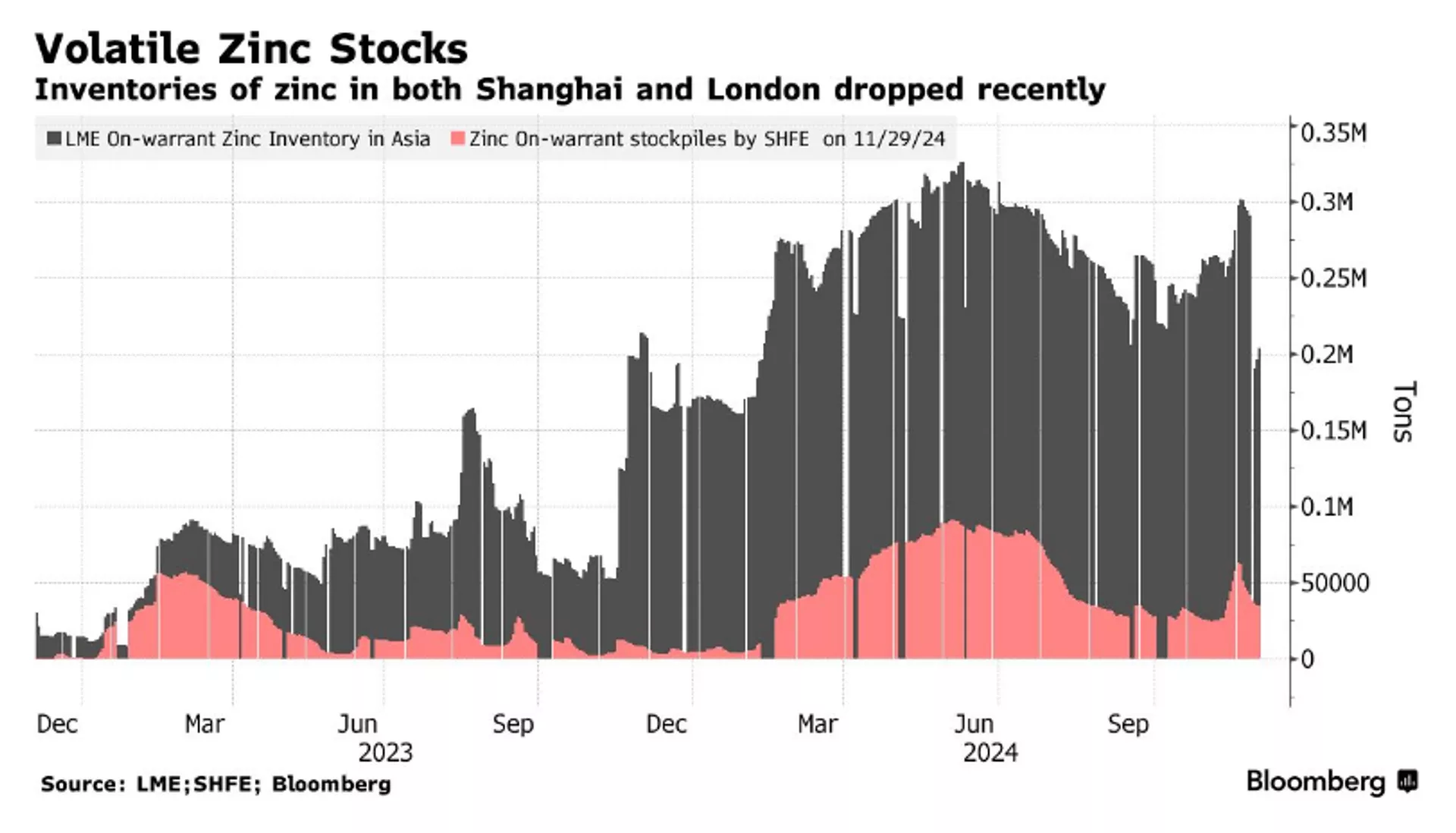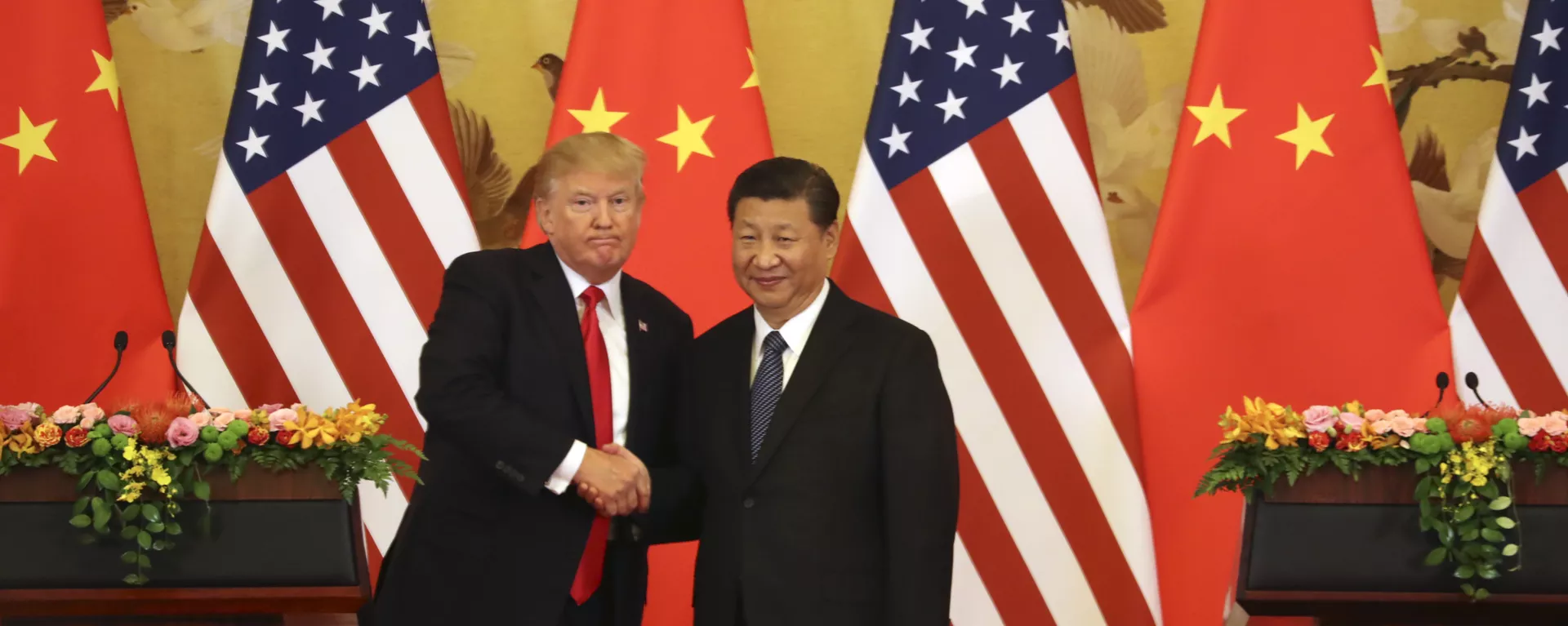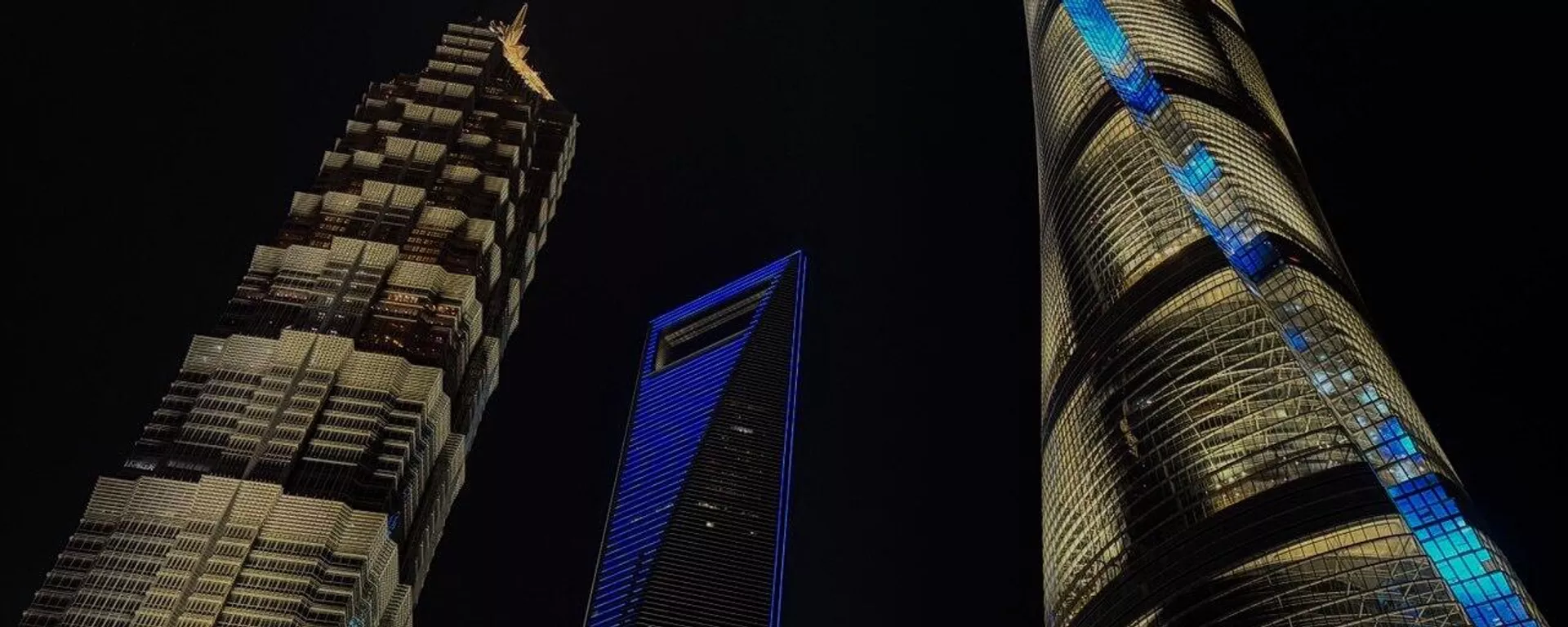Zinc’s recent price swings reflect the supply pressures of the critical metal that are likely to spill over into 2025, Bloomberg cited analysts as saying.
On November 28, zinc prices fell by 2.5%, only to rebound and finish nearly 5% higher on the London Metal Exchange (LME). However, by December 1, the price dropped again, settling at $3,089.50 per ton, a decline of 0.4%.
© Photo : BloombergScreenshot showing volatile zinc stocks.

Screenshot showing volatile zinc stocks.
© Photo : Bloomberg
The wave of turbulence on the volatile zinc market offers a taste of potential fallout from US President-elect Donald Trump’s threat to slap additional 10% tariffs on all goods from China.
The Asian giant dominates the global market of the rare earth metal, with an annual zinc output of 4.2 million metric tons.
Should there be any further flare-ups in the US-China trade feud, this would likely impact both the supply and pricing of this key industrial metal, which is primarily used for corrosion resistance in steel. Additionally, zinc oxide plays a crucial role in the semiconductor industry, particularly in electronic devices.
The recent surge in prices was fueled by one of the largest withdrawals of zinc from the LME in over a decade. On the Shanghai Futures Exchange, inventories fell by more than 9,000 tons, reflecting a similar decline in London, attributed to take-out orders from the Trafigura Group, a global trading giant.
Worldwide demand for refined zinc is projected to increase by 1.6% to 14.04 million tons in 2025, according to the International Lead and Zinc Study Group.

 4 months ago
33
4 months ago
33







 We deliver critical software at unparalleled value and speed to help your business thrive
We deliver critical software at unparalleled value and speed to help your business thrive






 English (US) ·
English (US) ·